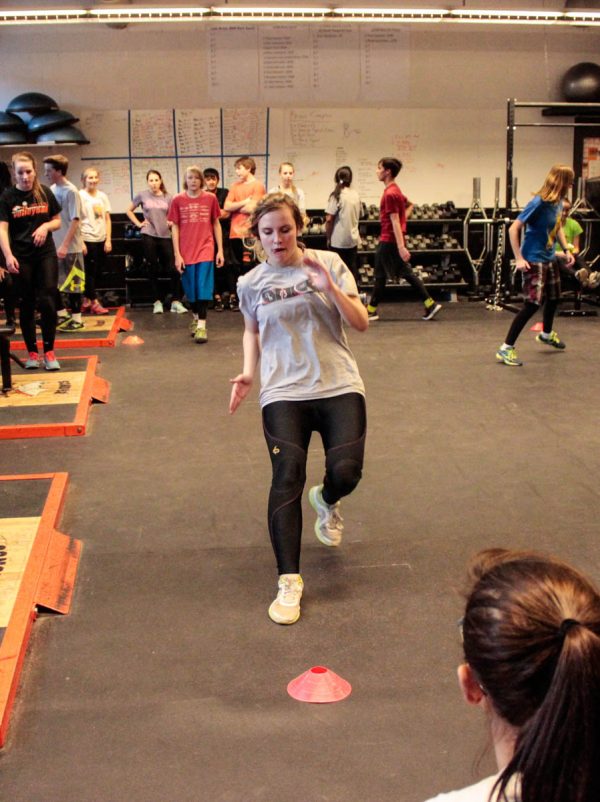
By Jordan Smothermon
ACL injuries are an epidemic for young female athletes. Female adolescents are eight times more likely, on average, to suffer an ACL tear than their male counterparts across all high school sports – an injury that take 6-9 months (a whole season) to recover from. This statistic is the confluence of a number of factors: physical development, sexual maturation, muscular asymmetry, and muscular recruitment patterns. These factors can be reduced significantly through proper training, specifically neuromuscular training.
Designed specifically to strengthen and improve female adolescent athletes’ knees, Athena is an 8-week training plan scaled to each individual athlete and includes a basic knee injury risk test to help you self-assess the stability of your knees. The plan contains a number of elements designed to improve neuromuscular function and strength of the muscles surrounding the knee.
The purposes of the training plan are to 1) increase neuromuscular control by improving or reintegrating basic movement patterns under a range of activities from very simple to very dynamic; 2) increase muscular activity (a churched-up way of saying strength) of the muscles that control the knee; and 3) perhaps the most important, long-term efficacy of adaptation – in other words, will the effects be permanent or at least semi-permanent. Simply, we’re going to improve athlete movement and make them stronger for the long term.
Neuromuscular training involves training the muscles to work more effectively and properly with the central nervous system. It seems like this wouldn’t be necessary. Shouldn’t our bodies always know how to work properly? Yes, but that’s not the reality of a student’s modern life. Sitting at desks, in front of computers, etc. cause muscles to forget how to work with the central nervous system because, simply, those patterns aren’t being used. Combine that with the complexities of bones outgrowing muscular development and problems emerge that put girls’ knees at risk.
Unlike males, developing girls lose or don’t improve their ability to move as they develop since they don’t go through a giant increase in testosterone, the hormone that allows boys to increase muscular size as they go through puberty.
We train many female athletes who rely on their bodies to make a living, whether they are mountain guides, soldiers, or law enforcement officers. We take our commitment to these athletes seriously and strive to provide the best possible training that will increase performance and reduce injury risk, especially as females expand into more sports and the tactical arena. So, this is the next logical step in our female athletes’ programming. But, to really affect change, training needs to start early, preferably as athletes are developing.
There are a number of programs out there with a similar aim. What sets ours apart is the strategic combination of strength work and plyometric/agility training. Furthermore, it is the progression of each component, in combination, scaled to the athlete, that allows any girl regardless of training experience to move through the program and experience the program goals.
